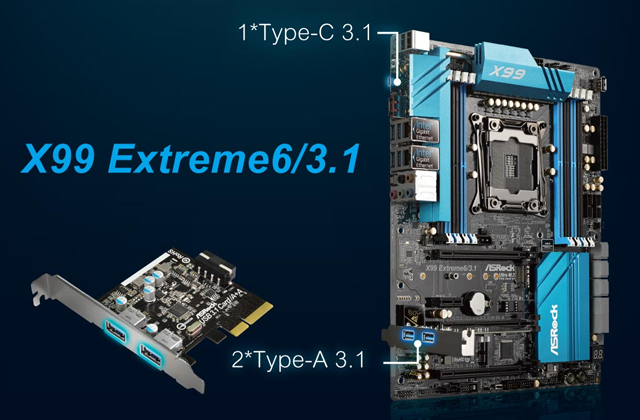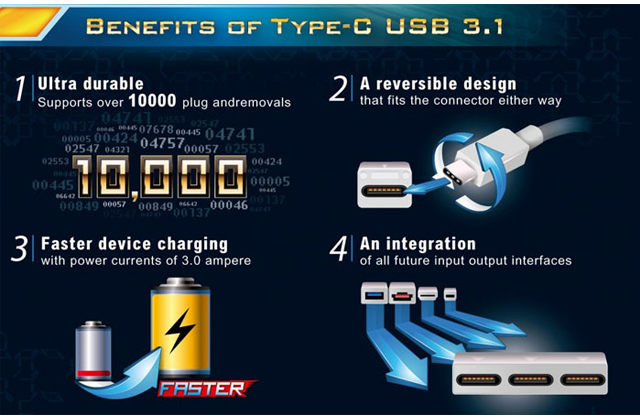
For a good while now, USB sticks have been the most common device used for connecting varied peripherals to PCs, tablets, smartphones, and other iOS devices. Over the years, USB sticks have made the object of several innovative upgrades, including the jump to the USB 3.1 version that was made this year. It is useless to say that PC manufacturers will find these innovative interfaces on all the upcoming motherboards from virtually all brands. However, ASRock’s Z97 and X99 motherboards are still to surprise us. In addition to the standard Type-A connectors, they will be the first to feature Type-C 10 Gb/s Super-Speed USB 3.1, a version capable of supporting virtually all next generation mobile devices.
One of the main attractions of these amazing next generation Super-Speed USB 3.1 is their ability to practically double the data rate, upgrading it from the 5Gb/s USB 3.0 provided up to 10 Gb/s for all USB 3.1 supporting devices. Put simple, transferring your data from storage devices will become two times faster, keeping standard Type-A connectors still compatible with the USB 2.0 and 3.0 gadgets.
Another important aspect definitely worth mentioning is the creation of the Type-C USB 3.1 interfaces, which will become an integrant part of all the forthcoming input/output interfaces. There is no doubt that the compatibility with standard Type-A connectors would thus be broken. However, on a positive note, after many years of keeping our fingers crossed when trying to plug in Type-A USB connectors behind a PC, hoping to get the adequate orientation, the long awaited reversible Type-C USB interfaces are finally here to make our lives easier and more comfortable! In addition, during this whole transition period, ASRock will be supporting both Type-C USB 3.1 and Type-A connectors.

Among the most important features of the new Type-C interface, it is worth mentioning its smaller size. To some degree, it was something predictable, as the size of our devices is also considerably shrinking. Other features worth highlighting are the enhanced durability -capable of supporting more than ten thousand plugs and removals, – and a considerable improvement from the old 0.9 ampere power current (for USB 3.0) to 3 ampere power currents on USB 3.1 for fast device charging.
ASRock’s Z97 Extreme6/3.1. will be among the first motherboards in the world to feature a Type-C USB 3.1. Just as the previous version, the motherboard will be endowed with ASRock’s Super Alloy features, quad SLI, quad CrossFireX, PCIe Gen3 Ultra M.2, and Purity Sound2. What’s more, in addition to the 5 USB 2.0 and 10 USB 3.0 connectors on-board, the motherboard will also feature a USB 3.1 add-on carrying both a Type-C port and one USB 3.1 Type-A port.
ASRock’s X99 Extreme6/3.1 is another motherboard part of the Super Alloy Series motherboard. This device will also get a dosage of USB 3.1. It will be endowed with 3-Way CrossFireX or SLI, Ultra M.2, and Purity Sound2. In addition, it will also feature a USB 3.1 add-on card capable of supporting two USB 3.1 Type-A ports, an on-board USB 3.1 Type-C (especially designed for next generation devices) and a significant number of standard USB ports as well.
Both motherboard models sport numerous additional features that are quite common in the Extreme6 line and similar high-end motherboards. However, ASRock is aiming to be the first to provide users with the USB 3.1 Type-C connector.
All we have to do now is to wait for the USB 3.1 devices to actually become available on the market. However, buying them now will imply having to wait patiently for the remaining industry to catch up.
